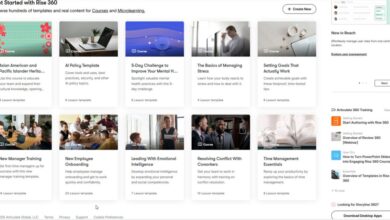Stirred, not shaken

Last holiday I started a new blog.
Which was unexpected (even for myself) because not so long ago I almost gave up on blogging. Now I’m juggling two.
But there is a method to the madness.
When I hark back to an earlier post of mine, Why I blog, I recognise my founding principle holds true:
I blog primarily for myself. I use writing as a vehicle for my thinking. By presenting my thoughts to the world, I need to understand them, and articulate them effectively for others to understand. And if other people learn something from my insights and experiences, then I’m delighted.
Which is why I’ve continued to blog about educational technology and learning & development more broadly. While I’m still working in the profession, I’m still thinking about it, deliberating new ideas, overcoming challenges in the real world, and striving to innovate.
Publishing my cognition crystallises it.
Having said that, I’ve consciously taken a step back to spend more time enjoying other aspects of my life. Not just quirky interests such as cryptozoology, but also quirky hobbies such as cocktail making. And the latter is what my new blog, Ryan’s Cocktails, is all about.
I don’t consider myself a cocktail expert – not by a long shot. I prefer the term enthusiast, and I’m using the blog to document my journey as I learn the craft. And if other people learn something from my insights and experiences, then I’m delighted.
However I’m not just learning about cocktails. By looking through the lens of this completely different topic, I’ve sharpened my focus on the lessons that blogging teaches me about learning…

Lesson #1. Curiosity fuels expertise.
Find a job you love, and you will never have to work a day in your life. Well the same applies to learning. When you’re interested in a topic, researching it is no chore; it’s a joy. One question leads to another, which in turn leads to another, and so on rhizomatically. As you dive head-first down each rabbit hole, you extend the depth and breadth of your knowledge.
In the context of cocktail making, I’ve explored a world of spirits, liqueurs, syrups, garnishes, apparatus, measurements and techniques, not to mention the myriad tips and tricks I’ve picked up along the way.
In the context of learning & development, I’ve explored a world of learning theory, instructional design, educational technology and executive strategy, not to mention the myriad subtopics and allied topics in-between.
Lesson #2. Primary sources are superior.
I learned this lesson well in history class. While secondary and tertiary sources are useful – especially in the absence of a primary source – they are ultimately interpretations. Like a game of Telephone, mistakes, omissions or other misrepresentations will be made, and thereafter perpetuated.
In the context of cocktail making, I’ve sourced an 1930s-era bartender’s original recipe to correct a mistranslated ingredient, and I’ve read the Mexican standards to clarify the official differences between mezcal and tequila. You may think I’m mad, but I had a ball doing it, and now I know what’s right.
In the context of learning & development, I maintain a similar healthy skepticism of secondary and tertiary sources, especially when it relates to empirical research. For example, I recently read on Wikipedia that Ebbinghaus investigated the rate of forgetting, but not the effect of spaced repetition; yet a cursory glance at his book’s table of contents reveals otherwise.
Indeed the pioneering German is no stranger to criticism. Over the years, many of our peers have derided his findings because they were based on a sample of 1 (himself); yet in the preface of the same book he warns us of exactly that, while emphasising his investigation is preliminary. So when I refer to the forgetting curve, I don’t position it as a universal truth; rather I use it as a device to explain a theoretical concept.
By way of a more recent example, the mainstream media has been reporting that ChatGPT causes brain rot; yet by reading the original paper by MIT, I can see they made no such claim. Their contribution suggests that its use for essay writing eliminates the need for critical thinking and hence inhibits learning – not that it degrades what has already been learned. By understanding this point of difference, we can do something about it.
Lesson #3. Mental models are a superpower.
All models are wrong, but some are useful. By simplifying a complex system, they can only ever be considered high-level approximations; but in doing so, they help us make sense of said system.
In the context of cocktail making, hundreds – if not thousands – of cocktails exist, plus endless tweaks and variations. Meaning they’re impossible to remember. However, by understanding classes of cocktails such as sours and daisies, and memorising ratios such as 2:1:1 and 3:2:1, I can use patterns to recall most of the recipes that I’d ever want to make at a moment’s notice.
In the context of learning & development, models such as ADDIE, Bloom’s, 70:20:10 and Kirkpatrick abound, and I’ve even devised my own for training at scale and implementing a skills-based learning strategy. Again, some of these models attract derision from our peers, but by definition they’re not meant to be exhaustive. I use them in the flow of work to cross-check any big ticket items that I may have forgotten, and to respond in real time to those unexpected questions that start with: So how are you going to …?
Lesson #4. Distributed knowledge makes us superhuman.
While mental models are a superpower, the human mind remains humanly fallible. The volume of knowledge that is pertinent to our practice is so vast, we can’t contain it all in our own heads. So we need to leverage other forms of accommodation.
In the context of cocktail making, although classes and ratios will help me recall a given recipe, sometimes I’m too distracted or too tired or too lazy to try – or it falls outside the bounds of a mental model – so I’ll look it up on my own blog. I prefer doing this over googling it, because my blog distills all my prior research and experimentation.
In the context of learning & development, I similarly mine my own blog to refresh my memory of a key concept, source copy for a proposal, or audit my work against the ideas I’ve championed in the past. Without having my blog for reference, I’d have to start from scratch each time.
Lesson #5. We must transcend AI.
The emergence of generative AI has empowered us like never before, but I caution against blithely outsourcing our intelligence to the robot. Just as googling something will provide an immediate but potentially meaningless answer, using the likes of ChatGPT as a 21st-Century Batcomputer is quick and convenient, but it lacks the kind of depth and nuance that only time and effort can earn.
In the context of cocktail making, for example, I could easily ask ChatGPT to give me the recipe for an Amaretto Sour. And I’m sure its reply would be satisfactory. However, it won’t be the way that I make an Amaretto Sour – which is the product of significant critical thinking on my part. Certainly the robot can help me get there, but ultimately it’s up to me to steer the research, do the experiments, and refine the recipe (not to mention the technique) to make the Amaretto Sour that suits my palate.
In the context of learning & development, ChatGPT can similarly be used as a tool to boost speed and productivity. However, despite stellar prompting, no response will perfectly align to the culture, systems and other circumstances that define your working environment. It’s still on you to work out what really works and what doesn’t.
In other words, we need to transcend AI to progress from output to outcome.



